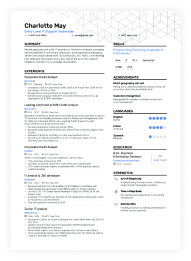

Elevate your application with a powerful objective statement. Perfect for new graduates, career switchers, or those advancing, our guide offers essential tips and examples to align your ambitions with industry needs and make a strong first impression.
Pub : 9/17/2020 • Upd : 9/4/2024 26 min read

The resume objective is a 3-sentence career statement that sits at the top of your resume. It highlights your biggest strengths, relevant experience and how you’re going to add value to the specific job or company you’re applying for. The objective statement shows prospective employers how you’re going to contribute to their business in the context of your skills and work history.
In 2024, the relevance of resume objectives continues to spark debate. While some job seekers argue that objectives have become outdated, the reality is that they hold considerable value for those with minimal or no experience. People just starting their professional journey or transitioning to a new career can greatly enhance their resumes with a strong objective statement. The key lies in understanding when and how to write a resume objective that sets your application apart.
In this guide, we'll cover:
Drop your resume here or choose a file. PDF & DOCX only. Max 2MB file size.
Privacy guaranteedA resume objective is a brief statement placed beneath the resume header. It shows an applicant’s intent to grow in a specific field, despite the lack of experience. Done correctly, it showcases your key skills , experience, and unique value proposition, showing employers the ways you'll contribute to their success.
At their worst, objectives can be deal-breakers. A vague objective with too many generic skills and experiences might put off recruiters from reading the rest of your resume.
Here’s the thing. Some recruiters view objectives as overly self-focused. Poorly written ones certainly are! However, when crafted skillfully, objectives spotlight the value you offer to employers and align your professional aspirations with their goals. The frustration with that peculiar correlation and the inability to write them eloquently is where the bad reputation of objectives comes from.
Let’s solve this.
There are few instances where an objective statement is absolutely necessary.
A resume summary provides an overview of your entire work experience, strongest skills, and qualifications. It’s the ideal place to highlight achievements you’re most proud of or certifications that are relevant to the job listing. If you have more than 2 years of experience, then a resume summary is your best choice.
Objectives, on the other hand, are suited for those less experienced ones, people entering a new job market, or those building their first resume . A less tangible difference is the perspective — they are more oriented towards the candidate’s own professional goals within a given organization.
You may have noticed that resume summaries and objectives are similar concepts. The major difference between them lies in their strength and focus.
Resume objectives tend to be short, no more than 3 sentences long, while summaries can span up to 5. The length, of course, depends on the specific content of each.

So, how are resume summaries and objectives similar?
This article provides insights to resume objectives best practices, but if you’re not in your most creative mood, feel free to use our resume builder which offers hundreds of content suggestions .
A good resume objective focuses on what the employer seeks, incorporating more of the job's key requirements rather than an excess of "I" statements. It may be tempting to use this space to highlight your achievements, but you’d need a more strategic approach to meet recruiters' criteria.
A well-crafted objective statement helps you:
Speaking of the first 10 seconds, the objective can be the make-or-break moment where you either secure a strong first impression or end up in the rejection pile. Use your three-sentence allowance to include:
Writing an effective resume objective boils down to understanding your audience. As with anything related to communication, your approach should be audience-first. What are their needs and pain points? How can you respond to them?
Since your audience is the prospective employer, this is what you put in the resume objective:
Use Enhancv’s Resume Builder
Use Enhancv’s Resume Builder and make a resume that stands out.
Now that we’ve covered the essentials, let’s explore some examples.